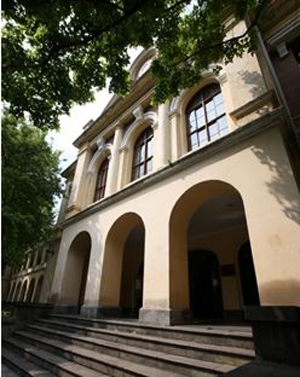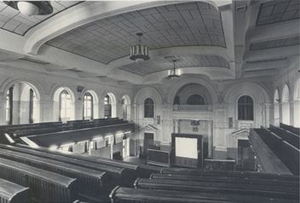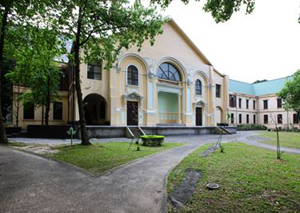:::
Legacies of NTU - No. 10
The Humanities of Medical Evolution: NTU Museum of Medical Humanities
 The Museum of Medical Humanities is a combination of Japanese and European designs.
(Image: NTU Museum) The National Taiwan University Museum of Medical Humanities is situated within one of NTU’s oldest buildings, and the building has walked the nation through the change of governance and medical evolution. Built in 1907 as the Medical School of the Taiwan Governor-General during the Japanese rule, the building became home to the Taihoku Imperial University Medical School in 1936, and was later registered as an administrative building for the NTU College of Medicine after the university was reorganized in 1945.
The Museum of Medical Humanities was designed by Japanese architect Kondo Shiro, the mastermind behind other great structures such as the Ximen Red House (西門町紅樓), the Taipei Municipal Chien Kuo Senior High School Red House (建中紅樓), and the Taipei Museum of Contemporary Art. Like many of Kondo’s designs, the the Museum of Medical Humanities is a combination of Japanese and European influences. The building's hall and corridors are decorated with multiple arcades, its 19th century French Mansard-style rooftop is paved with slate tiles and copper thatching, and small round windows open the top of the structure to an abundance of sunlight. The original roof, however, was destroyed in a fire in 1930, and the original has unfortunately been forever lost to us.
 Image of the original 1907 conference hall. Only the wall behind the podium has been kept after the building’s resurrection project.
(Image: NTU Museum) Yet it was not only the roof that was almost in danger of decimation. During the College of Medicine’s expansion project in 1980, the building was under threat of demolishment as a large proportion of the structure had been discarded for over a decade. Fortunately, former NTUCM Dean Bor-Shen Hsieh (謝博生), along with several members of the school’s faculty, suggested that the building be repaired so that its spirit and symbolism could be passed down to future medical students. An alumni fundraising campaign was subsequently launched in 1995, and after sufficient funding were raised, the building was quickly resurrected and renamed the Museum of Medical Humanities in 1998.
 The remaining wall has now been renovated as an exterior wall facing the newly built garden, which is where the conference hall had previously stood.
(Image: NTU Museum) Taiwan’s medical history is closely related to the island’s social change; therefore, it is the Museum’s goal to serve both social and educational functions through the collection, exhibition, and promotion of the nation’s medical history by helping the public understand the connection between medicine and the humanities.
Visit the Museum’s official website to learn more about our school’s history, or click HERE to access original article written by the NTU Museum of Medical Humanities (05/21/2014).
National Taiwan University is home to an abundance of educational and cultural artifacts that bear the history of the campus’ past. As a result, the NTU Museums project, a campaign that integrates the university’s ten individual museums, was launched in 2005 and officially inaugurated in 2007 so that the school’s hidden treasures could be introduced to the public. To honor the school’s past, the “Legacies of NTU” series will feature the stories of NTU’s hidden treasures by taking you through the most precious items among the university’s collection. |

